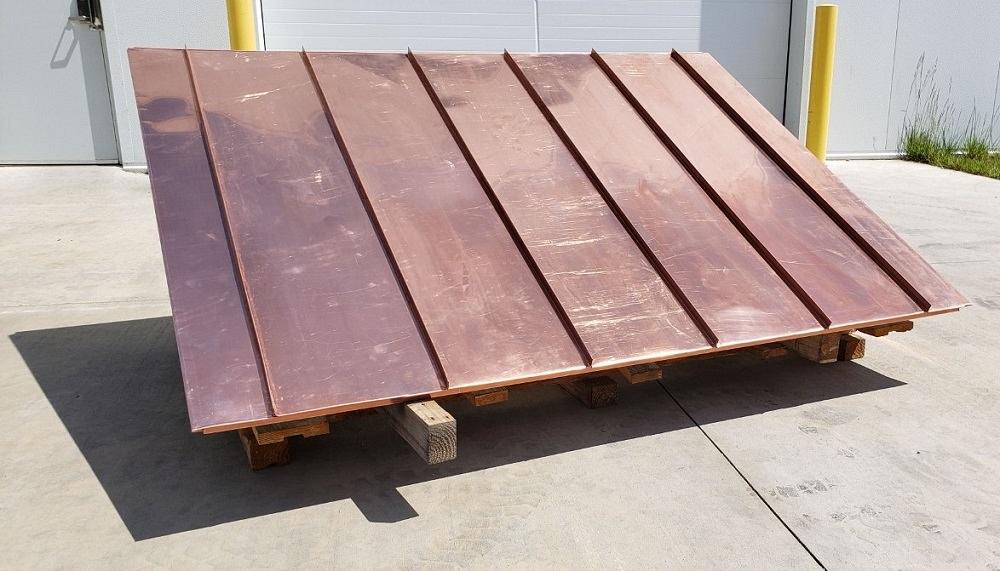- FMA
- The Fabricator
- FABTECH
- Canadian Metalworking
Categories
- Additive Manufacturing
- Aluminum Welding
- Arc Welding
- Assembly and Joining
- Automation and Robotics
- Bending and Forming
- Consumables
- Cutting and Weld Prep
- Electric Vehicles
- En Español
- Finishing
- Hydroforming
- Laser Cutting
- Laser Welding
- Machining
- Manufacturing Software
- Materials Handling
- Metals/Materials
- Oxyfuel Cutting
- Plasma Cutting
- Power Tools
- Punching and Other Holemaking
- Roll Forming
- Safety
- Sawing
- Shearing
- Shop Management
- Testing and Measuring
- Tube and Pipe Fabrication
- Tube and Pipe Production
- Waterjet Cutting
Industry Directory
Webcasts
Podcasts
FAB 40
Advertise
Subscribe
Account Login
Search
The rule of three in a metal fabrication shop
A trio of rare projects come along in a matter of just weeks at one N.C. job shop
- By Nick Martin
- May 23, 2020

Even in metal fabrication shops, the rule of three can apply. Nick Martin of Barnes MetalCrafters in North Carolina explains how a trio of long-forgotten projects came along in a matter of just a few weeks. Getty Images
I've been told things, good and bad, come in threes. I think that’s usually true. Coronavirus, murder hornets, and fill in the blank with whatever else comes to mind in 2020.
We've been in the new shop for a little over a year and have enjoyed it, to say the least. But in the last few weeks, we've had some jobs come through that needed some major dusting of the mind. Our “three” comes in a trio of projects that our shop hasn’t worked on in years. I’m calling these projects the “three amigos.” We had to clean the cobwebs off drawings, machines, and memory to get the work moving and get reacclimated with these types of projects.
The first amigo came in the form of copper. We haven't done any copper fabricating in several years. Aside from the basic cut and fold here and there, it’s been roughly four years since we’ve actually made something substantial. We then made a really nice chimney cap. It turned out great. Now the task at hand was to replace a weathered, fabric-covered awning with new shiny copper.
The aluminum frame was in good shape, so we decided to cover it in aluminum sheet before wrapping that with copper. The project seemed pretty straightforward, until we had to relearn how to do something that hasn’t been done in ages. Nick Trueheart, Justin Mullins, and my dad got together to devise a plan of attack so everything would be wrapped in equal sections, hiding the rivets. Getting the first piece done was the trickiest and the rest followed suit.
In the end they came up with a shiny copper awning that will be sure to last for many years to come and get lots of compliments. And until it gets some patina, we just have to be sure to wear sunglasses while looking at it. At least the next awning we do will go much more smoothly since the customer does have a couple more to bring to us.
Job amigo No. 2 was one that I’ve written about in the past: a ladder rack for a utility truck. We’ve actually done another one since then and switched from steel to aluminum for several reasons. This was another one of those jobs where we had to dust the ol’ cobwebs off, although we were lucky enough to have some notes stashed in a folder in the office. That helped to a certain extent, but luckily the customer also drove the last truck we outfitted to the shop so we could figure out exactly what had been done.
If you’re a fabricator and say to yourself that you will never see a job more than once, it may be time to invest in some quality notes and drawings. That applies to any project, which is probably the reason we have a hard time throwing anything away.
With that said, I decided to make a decent layout drawing and cut sheet for the ladder rack. I did this with a simple skeletal sketch in Autodesk Inventor and utilized the Frame Generator tool to add the angle iron, C-channel, and square tubing. Pretty simple and straightforward if you are familiar with the program. Either way, I have something that can get the job started next time, no matter the make and model of the truck being outfitted. We have a little time on this project because we will get the majority of the fabrication done before the truck gets dropped off for install.
So back to things happening in threes. Here’s the third amigo: We had a customer call us and they’ve had several factories shorthanded due to COVID-19. They needed some parts that we’ve made in the past. The last time we did this job was roughly two to three years ago in the old shop.
When we went to set up the Tauring CNC roller to run some test parts, we realized that we didn’t have the plug to power up the machine. It had been years since we ran it. Sure enough, the plug was tied up in the rafters at the old shop. The next day we met an electrician to get the old plug down so we could get this job rolling. He made a cord and we were able to get the machine turned on.
The biggest issue with not using this machine in so long was that the programs were not saved, and the memory was wiped clean. Luckily, we had every program written out on spreadsheets. We were able to reprogram the machine pretty quickly. Between Nick Trueheart and myself, we remembered how to run the machine. Another issue we had was the jig to make these parts was thrown away when we cleaned out the old shop. But we did have the jigs drawn in Inventor, so making another one was not too big of a deal. Figuring out the little tweaks to make the part work correctly would prove to be the hardest part. The material would not roll consistently on our machine, so we had to adjust the bends with a torch.
All three amigos were not the most difficult jobs we’ve ever encountered, but they were a big hiccup in the daily grind. Keeping your skills sharp is always essential. I am laughing at myself right now for even saying that word. Essential has been a key part of many businesses and fabrication shops lately.
If I've learned anything from events coming in threes, it would be that tricks of the trade are not always written down. When a job is completed, how often do you go back and write down every helpful detail thinking that you may never see that job again?
subscribe now

The Fabricator is North America's leading magazine for the metal forming and fabricating industry. The magazine delivers the news, technical articles, and case histories that enable fabricators to do their jobs more efficiently. The Fabricator has served the industry since 1970.
start your free subscriptionAbout the Author

Nick Martin
2121 Industrial Park Drive SE
Wilson, NC, 27893
252-291-0925
- Stay connected from anywhere

Easily access valuable industry resources now with full access to the digital edition of The Fabricator.

Easily access valuable industry resources now with full access to the digital edition of The Welder.

Easily access valuable industry resources now with full access to the digital edition of The Tube and Pipe Journal.
- Podcasting
- Podcast:
- The Fabricator Podcast
- Published:
- 04/16/2024
- Running Time:
- 63:29
In this episode of The Fabricator Podcast, Caleb Chamberlain, co-founder and CEO of OSH Cut, discusses his company’s...
- Industry Events
16th Annual Safety Conference
- April 30 - May 1, 2024
- Elgin,
Pipe and Tube Conference
- May 21 - 22, 2024
- Omaha, NE
World-Class Roll Forming Workshop
- June 5 - 6, 2024
- Louisville, KY
Advanced Laser Application Workshop
- June 25 - 27, 2024
- Novi, MI
































